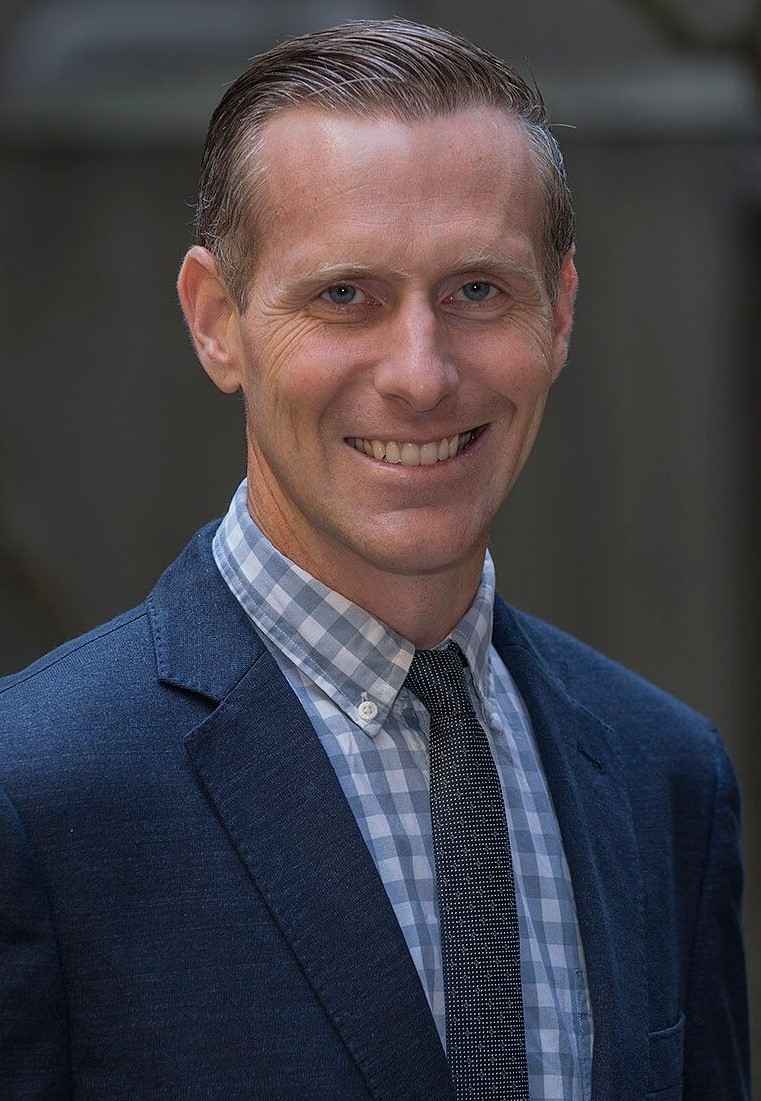 The contours of nonprofit organizations in Sacramento are changing as they seek to adjust to the financial disruption caused by the current worldwide health crisis. (Sacramento State/Rob Neep)
The contours of nonprofit organizations in Sacramento are changing as they seek to adjust to the financial disruption caused by the current worldwide health crisis. (Sacramento State/Rob Neep)
By Cynthia Hubert
Charities in the Sacramento region have been hammered by the coronavirus crisis, with many projected to run out of cash within a few months without major interventions, according to a new survey by a Sacramento State professor.
Ryan P. Fuller, an assistant professor of Management and Organizations in the College of Business Administration, polled nonprofit organizations in Sacramento, El Dorado, Placer, Nevada, Sutter, Yolo and Yuba counties about how they are faring amid the COVID-19 pandemic that has forced most people to stay in their homes for the past month.
The survey, conducted March 30 through April 13, found that many are feeling serious financial pressure, and without significant help might not survive.
 Ryan Fuller's work illustrates how the tough economic environment caused by the pandemic is hurting nonprofit organizations. (Sacramento State)
Ryan Fuller's work illustrates how the tough economic environment caused by the pandemic is hurting nonprofit organizations. (Sacramento State)A majority of the 109 nonprofits responding to Fuller’s survey estimated that they could weather the current crisis for three to six months. Already, concerns about the virus have led to closures of nearly 20 percent of those surveyed. Nearly 70 percent said they have curtailed operations.
“If this situation drags on longer than six months, many would be financially devastated and unable to weather it,” Fuller said.
The region’s charities are trying to adapt and innovate by communicating their messages and needs to stakeholders in new ways, he said. But their futures depend on “short-term, urgent” investments and ongoing support.
“Right now they are weathering the crisis, but things could get pretty bleak if those of us who are able to support them don’t do so,” Fuller said.
Nonprofits typically have tight budgets and rely on volunteers, grants, and donations to maintain operations. All of those areas have been affected by concerns about the virus, which has shuttered most businesses in the state and forced residents to isolate themselves at home. At the same time, the services that nonprofits provide are in greater demand than ever, as people navigate the financial and emotional stresses of the pandemic, Fuller said.
Fuller, who has a longtime professional and personal interest in nonprofit organizations, said he conducted the survey in part to “bring a spotlight on an industry that really needs help” and has received relatively little attention during the pandemic.
Charities that focus on areas such as the arts, disaster response, housing, food, health and youth services, among others, are important contributors to the region’s economy, Fuller said. In California, charitable groups represent 15 percent of the state’s gross domestic product and employ one in 14 people.
“The services that they provide are so important,” Fuller said. “We don’t want them to go away.”
To gauge how nonprofits are coping, Fuller sent e-mail surveys to about 1,000 charities that provide a wide variety of services in the seven-county region. He got responses from about 10 percent of them. Among the findings:
- 19 percent of survey respondents shut down because of the pandemic, and 68 percent have curtailed services. Just 13 percent said they are conducting normal operations.
- Asked how long organizations would be able to continue to operate without additional revenue, 26 percent said one month to three months, and 33 percent answered three months to six months.
- 74 percent cited loss of revenue due to canceled events as a significant impact to their organizations. More than 50 percent cited a drop in volunteers, and 47 percent cited difficulty in fulfilling “deliverables” for contracts or grants for services because of physical distancing mandates.
- Half said they are working with local, state or the federal governments to obtain disaster relief or other help.
- 71 percent said they are creating new ways to deliver their organization’s mission, including using social media and video conferencing platforms such as Zoom.
Rene Hamlin, development director for Snowline Hospice, which serves patients in Sacramento, Placer and El Dorado counties, said her nonprofit had to close its thrift store and lay off 60 employees because of coronavirus concerns.
Volunteers no longer meet with patients in person, but conduct “virtual visits,” Hamlin said. The hospice’s new “Sunshine Letters” program invites people across the country to send letters of hope and support to patients.
Nurses and other clinicians are working “in overdrive” to care for current patients and prepare for COVID-19 infections, said Hamlin. “We haven’t had any yet, but we are prepared if it happens,” she said.
Hamlin said Snowline will maintain its core services, which largely are paid by Medicare reimbursements. But it may have to sacrifice important services not covered by insurance, such as alternative therapies and grief-support groups.
She said she is cautiously hopeful about the future of charities in the region.
“This is a difficult situation for all of us,” she said. “But it’s also an opportunity for collaboration, to perhaps come together and increase efficiencies.”
David Bain, executive director of the National Alliance on Mental Illness in Sacramento, said his organization suspended most of its support groups and classes after the government issued orders for residents to remain at home. It recently began offering online support groups and will revive two suspended classes.
"I am concerned about the future of our organization," he said. Its two primary fundraising tools, the Big Day of Giving and an annual Walkathon, have gone virtual. "We were already at a lean time of the year for us, and now our fundraising is challenged."
He said he worries about the future of community-based organizations in the current climate.
"Some organizations have the funding, but only if they can provide the services," Bain said. "They are dependent on someone else, such as school districts, to remain open so they can provide service and invoice for the service. Without schools being open, no one will work, no invoicing, no payroll. Most of us operate on thin margins so we can't remain in this state for long."
Fuller suggested various resources for helping charities during the current crisis and beyond:
- HandsOnSacramento has a regularly updated list of COVID-19 related volunteer opportunities including sewing masks, distributing food and donating blood.
- The state of California also has a volunteer website.
- Charities also are seeking individual donations. The Big Day of Giving website lists hundreds of organizations in the region, sorted by cause.
- Regional COVID-19 disaster relief funds also have been created to support local organizations, including nonprofits. Those include the El Dorado Community Foundation, the Placer Community Foundation, and the Sacramento Community Region Foundation.
Nonprofit groups have shown a remarkable ability to bounce back from serious setbacks, Fuller said. But the current situation is unprecedented.
“The sector has shown that it is pretty resilient when it comes to major shocks,” he said. “But none of us have seen anything like this. We have a double shock: a health care crisis and a financial crisis. So, yes, I am worried about nonprofits.”
